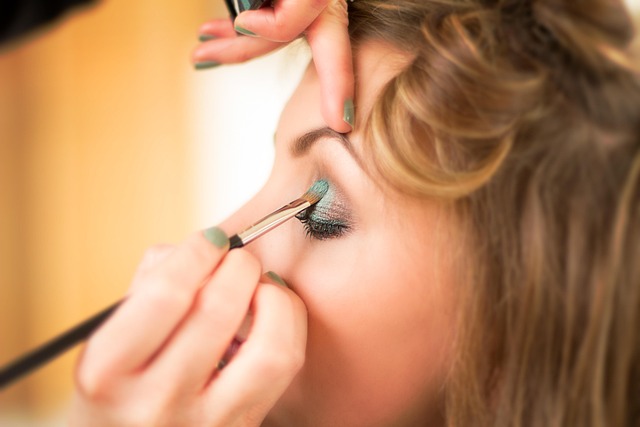Mastering the Art of Eyebrow Microblading
Eyebrow microblading has emerged as a revolutionary technique in the world of cosmetic enhancement, offering a semi-permanent solution for those seeking fuller, more defined eyebrows. This meticulous process involves the use of fine needles to deposit pigment into the epidermis, creating hair-like strokes that blend seamlessly with natural brow hairs. Unlike traditional tattooing, microblading provides a more natural appearance and typically lasts between one to three years. The popularity of this procedure has soared in recent years, with celebrities and everyday individuals alike embracing its transformative effects. As the demand for microblading continues to grow, it's essential to understand its origins, techniques, and considerations for those considering this beauty enhancement.

The Science Behind the Strokes
At its core, microblading is a form of cosmetic tattooing, but with crucial differences that set it apart from traditional tattoo methods. The process involves using a handheld tool equipped with ultra-fine needles to create shallow, precise incisions in the skin. These incisions are then filled with pigment, which is carefully matched to the client’s natural hair color and skin tone. The shallow depth of the incisions, typically reaching only the uppermost layers of the skin, contributes to the semi-permanent nature of microblading. This allows for natural fading over time and the ability to adjust the shape and color in future touch-up sessions.
Techniques and Artistry
Microblading is as much an art form as it is a technical skill. Practitioners must have a keen eye for symmetry, an understanding of facial proportions, and the ability to create natural-looking hair strokes. Various techniques have emerged within the field, each offering unique benefits:
-
Hair Stroke Technique: The most common method, involving the creation of individual hair-like strokes.
-
Powder Brow Technique: Offers a softer, more filled-in look reminiscent of brow powder makeup.
-
Combination Brow: Blends both hair strokes and powder techniques for a more dimensional appearance.
-
Ombré Brow: Creates a gradient effect, with darker tails fading into lighter fronts.
The choice of technique depends on the client’s desired outcome, natural brow density, and skin type.
The Microblading Process
A typical microblading session begins with a thorough consultation to discuss the client’s goals and expectations. The practitioner then designs a custom brow shape, taking into account the client’s facial features and personal preferences. Once the design is approved, a topical anesthetic is applied to minimize discomfort during the procedure. The actual microblading process can take anywhere from 1 to 3 hours, depending on the complexity of the design and the client’s skin type. After the initial session, a touch-up appointment is usually scheduled 4-6 weeks later to refine the shape and color.
Considerations and Aftercare
While microblading offers stunning results for many, it’s not suitable for everyone. Individuals with certain skin conditions, those undergoing chemotherapy, or people with a history of keloid scarring may not be ideal candidates. It’s crucial to choose a reputable, licensed practitioner and follow strict aftercare instructions to ensure optimal healing and results. The healing process typically takes about 7-14 days, during which time the brows may appear darker before lightening to their final color. Proper aftercare includes avoiding water contact, sun exposure, and certain skincare products in the treated area.
The Evolution of Pigments and Tools
As microblading has gained popularity, there has been significant advancement in the pigments and tools used in the procedure. Early pigments were often too warm-toned, leading to an unnatural reddish or orangey appearance over time. Modern pigments are formulated to be more stable, with a wider range of cool and neutral undertones that mimic natural hair colors more accurately. Additionally, the development of nano blades and more ergonomic handheld tools has allowed for even finer, more precise strokes, further enhancing the natural appearance of microbladed brows.
The Impact on the Beauty Industry
Microblading has had a profound impact on the beauty industry, challenging traditional notions of makeup application and semi-permanent cosmetics. It has created a new niche within the beauty sector, with dedicated training programs and certifications emerging to meet the demand for skilled practitioners. The popularity of microblading has also influenced makeup trends, with many cosmetic brands developing products that mimic the natural, hair-like strokes achieved through microblading. This shift has encouraged a more natural approach to eyebrow enhancement across the beauty industry.
Ethical and Regulatory Considerations
As microblading continues to grow in popularity, there is an increasing focus on the ethical and regulatory aspects of the practice. In many regions, microblading falls into a gray area between cosmetics and tattooing, leading to inconsistent regulations. Efforts are being made to standardize training requirements and safety protocols to protect consumers and ensure high-quality results. Additionally, there is ongoing discussion about the environmental impact of microblading pigments and the importance of using eco-friendly, body-safe ingredients.
In conclusion, microblading represents a fascinating intersection of art, science, and beauty. Its ability to create natural-looking, semi-permanent eyebrows has revolutionized the way many approach their daily beauty routines. As the technique continues to evolve, it will undoubtedly remain a significant player in the world of cosmetic enhancement, offering individuals a way to achieve their desired brow aesthetics with precision and artistry.





